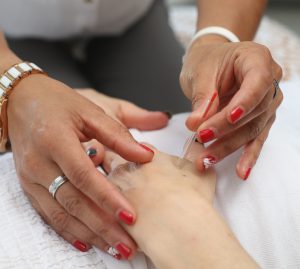There are many ways to treat and manage pain. 
Acupuncture is a widely known form of pain management that inserts thin stainless-steel needles into specific parts of the human body to relieve pain. However, what most people don’t know is that there is another pain treatment like acupuncture that was adopted a couple of decades ago. Dry needling, like acupuncture, uses thin stainless-steel needles. Some of the potential side effects are the same for both, including bruising and potential bleeding. For people who are unaware, both look alike too. But aside from those similarities, these two types of alternative pain management are different.
Acupuncture
Acupuncture is a form of traditional medicine that came from the east and has been used for thousands of years. People who use acupuncture believe that your body has healing energy or “chi” that is somehow blocked or interrupted. Acupuncture is applied to remove these blocks and help chi flow throughout the body. It can be used to treat several types of pain including the lower back, knees and neck. Not only can acupuncture help treat pain, but it can also help with other illnesses. It can treat nausea, vomiting and even depression. Acupuncture is practiced by thousands of acupuncturists across the world. Expert acupuncturists train in their profession for three to four years. With training requirements and regulations in place, it is very rare to experience any major negative side effects.
Dry Needling
Dry needling is a modern treatment designed to treat pain. It is steadily growing in popularity because it can relieve muscle pain and stiffness while also improving flexibility and range of motion. Dry needling focuses on targeting “trigger points” in knotted or hard muscles to relieve knots and relieve muscle pain or spasms. Unlike acupuncture, dry needling does not use sterilized water during application. Also, there is limited research for this treatment and not a lot of regulation for dry needling. Since it is a new therapy treatment, there has not a been a lot of studies to test the effectiveness of dry needling or any potential side effects that might come with it.
When deciding between dry needling and acupuncture, it really comes down to preference. Go with acupuncture if you want well established and practiced pain treatment. However, if you want to try something less established but still effective in treating pain, you could try dry needling. Before trying either of these treatments, you should consult with your doctor or primary care physician to see if these treatments are right for you.
For more information on the similarities and difference of acupuncture and dry needling, click here.
To view our acupuncture products, click here. For our dry needling products, click here.
Article written by William Graves.

 View Cart (3)
View Cart (3)